
# 730a - 1933 1c Fort Dearborn, imperf single
City: Chicago, Illinois
Printed By: Bureau of Engraving and Printing
In a battle lasting only 15 minutes on August 15, 1812, the Potawatomi Native Americans attacked Fort Dearborn near present-day Chicago, Illinois, and burned it to the ground. Fort Dearborn was built beside the Chicago River in 1803 and named after then-US Secretary of War Henry Dearborn. That part of the country, the Northwest Territory, had been an area of contention for years. The United States first acquired it as part of the Treaty of Paris in 1783, but clashes with local Native Americans continued over the years. Two Shawnee brothers, the prophet Tenskwatawa and Tecumseh, sought to expel the “children of the Evil Spirit,” the American settler. They formed a confederation of several tribes and soon became allies with Britain. As the war between the US and Britain became apparent, violence increased in the area. After a band of natives killed two white men nearby, many people from Chicago fled to Fort Dearborn for safety. There, 15 civilian men were organized into a militia. When the British captured Fort Mackinac in July 1812, General William Hull sent orders to Captain Nathan Heald to evacuate Fort Dearborn, destroy the arms and ammunition, and give what was left to friendly natives who could escort them to Fort Wayne. Heald was warned by a Potawatomi chief of an ambush, but the group decided to leave the fort anyway. In response to this, Captain William Wells, the sub-Native American agent at Fort Wayne, organized a group of 30 Miami natives to travel to Dearborn to escort the evacuees. On August 14, Heald met with leaders of the Potawatomi to inform them that he was evacuating the fort. However, they misunderstood and thought he was offering to give them the fort’s firearms, ammunition, and money if they would escort the settlers to Fort Wayne. Heald and Wells led the evacuation of the Fort on August 15. Their party consisted of 54 troops, 12 militia, nine women, and 18 children. About 1.5 miles from Dearborn, they encountered a band of Potawatomi warriors who quickly ambushed them. The cavalry made their way to a nearby dune to charge toward the attackers, leaving the wagon train of women and children. The militia stepped in and defended the wagons, but in the end, they were all killed. In all, the battle lasted about 15 minutes. The surviving soldiers surrendered and were taken as prisoners. American losses included 26 soldiers, all 12 militiamen, two women, and 12 children, with the rest taken prisoner. The Native Americans then burned down the fort and no US citizens entered the area until after the war. The confederacy’s victory was short-lived, as the US accelerated its policy of Native American removal in response.Battle of Fort Dearborn
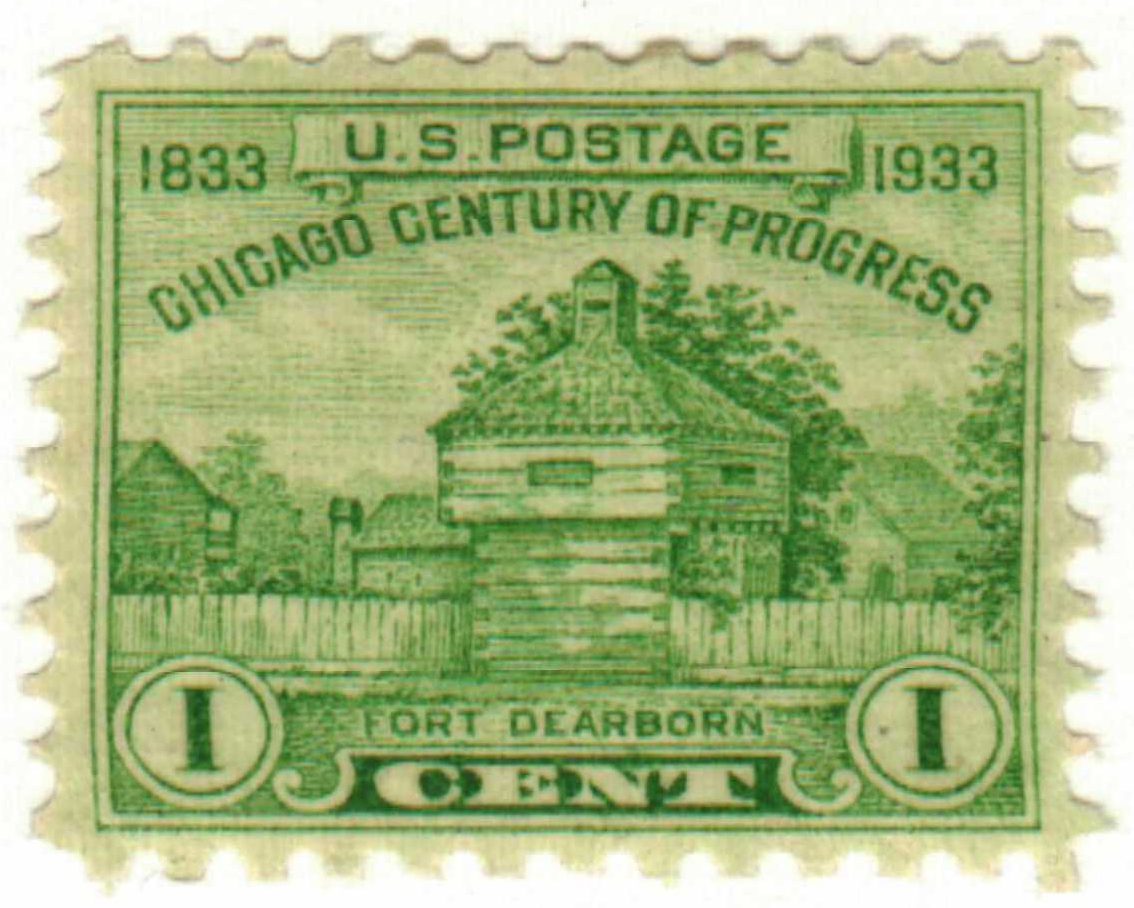
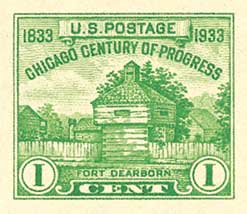
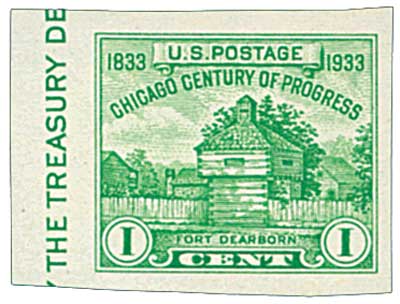

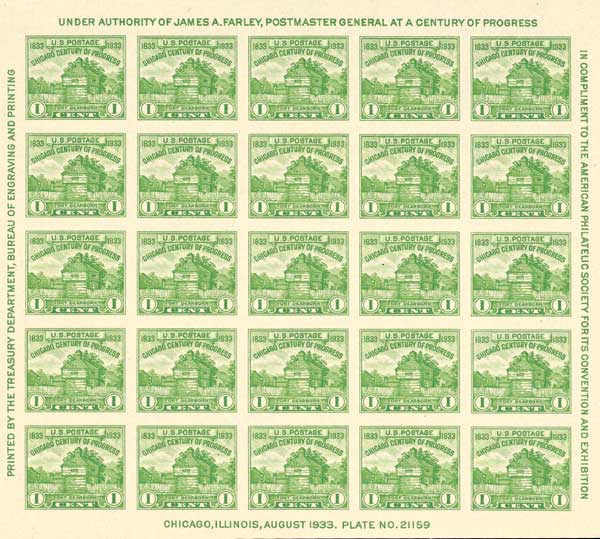
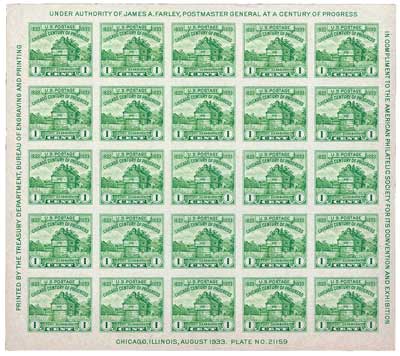
Fort Dearborn was rebuilt in 1816 and a replica of it was created for the 1933 Century of Progress Exhibition in Chicago.
City: Chicago, Illinois
Printed By: Bureau of Engraving and Printing
In a battle lasting only 15 minutes on August 15, 1812, the Potawatomi Native Americans attacked Fort Dearborn near present-day Chicago, Illinois, and burned it to the ground. Fort Dearborn was built beside the Chicago River in 1803 and named after then-US Secretary of War Henry Dearborn. That part of the country, the Northwest Territory, had been an area of contention for years. The United States first acquired it as part of the Treaty of Paris in 1783, but clashes with local Native Americans continued over the years. Two Shawnee brothers, the prophet Tenskwatawa and Tecumseh, sought to expel the “children of the Evil Spirit,” the American settler. They formed a confederation of several tribes and soon became allies with Britain. As the war between the US and Britain became apparent, violence increased in the area. After a band of natives killed two white men nearby, many people from Chicago fled to Fort Dearborn for safety. There, 15 civilian men were organized into a militia. When the British captured Fort Mackinac in July 1812, General William Hull sent orders to Captain Nathan Heald to evacuate Fort Dearborn, destroy the arms and ammunition, and give what was left to friendly natives who could escort them to Fort Wayne. Heald was warned by a Potawatomi chief of an ambush, but the group decided to leave the fort anyway. In response to this, Captain William Wells, the sub-Native American agent at Fort Wayne, organized a group of 30 Miami natives to travel to Dearborn to escort the evacuees. On August 14, Heald met with leaders of the Potawatomi to inform them that he was evacuating the fort. However, they misunderstood and thought he was offering to give them the fort’s firearms, ammunition, and money if they would escort the settlers to Fort Wayne. Heald and Wells led the evacuation of the Fort on August 15. Their party consisted of 54 troops, 12 militia, nine women, and 18 children. About 1.5 miles from Dearborn, they encountered a band of Potawatomi warriors who quickly ambushed them. The cavalry made their way to a nearby dune to charge toward the attackers, leaving the wagon train of women and children. The militia stepped in and defended the wagons, but in the end, they were all killed. In all, the battle lasted about 15 minutes. The surviving soldiers surrendered and were taken as prisoners. American losses included 26 soldiers, all 12 militiamen, two women, and 12 children, with the rest taken prisoner. The Native Americans then burned down the fort and no US citizens entered the area until after the war. The confederacy’s victory was short-lived, as the US accelerated its policy of Native American removal in response.Battle of Fort Dearborn






Fort Dearborn was rebuilt in 1816 and a replica of it was created for the 1933 Century of Progress Exhibition in Chicago.










